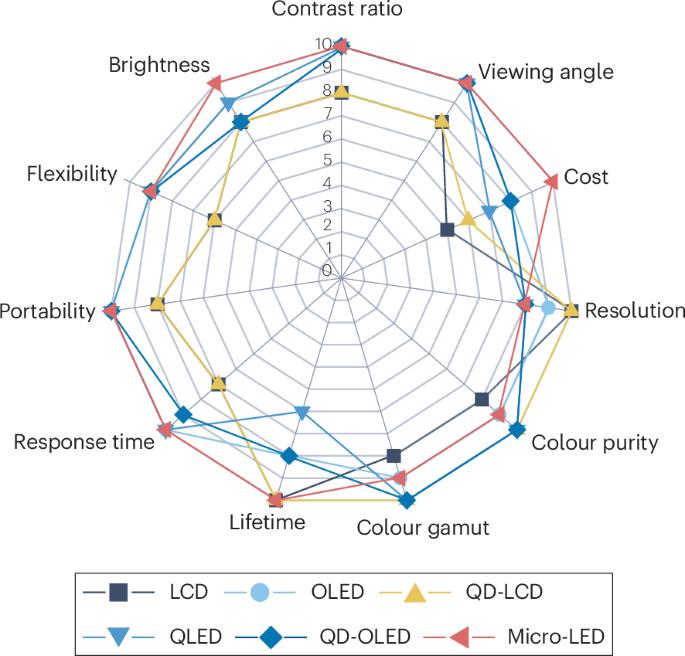Nanostructured materials for next-generation display technology
引用次数: 0
Abstract
Nanostructured materials, such as quantum dots (QDs), metal oxide nanoparticles and metal halide perovskite nanostructures, are promising for next-generation display technology owing to their low-cost solution process, high photoluminescence quantum yield, narrow emission, wide colour gamut and high colour purity. Over the past decade, commercial displays based on QD photoluminescence have been successfully introduced, such as QD-enhanced liquid crystal displays, QD organic light-emitting diodes and QD light-emitting diodes. Electroluminescence (EL) from nanostructured materials represents one of the ultimate goals for future display technology, owing to its high efficiency and simple device structure. However, the electroluminescent application of these nanomaterials is still in its infancy, primarily owing to the instability of blue devices and immature mass-production technologies. This Review introduces the progress of photoluminescent QDs, with a focus on advancements in EL. We explore improvements in materials and device design to enhance EL stability and to examine critical mass-production technologies, including high-resolution display innovations. Finally, we outline future research direction for enhancing operation stability of deep-blue EL. Nanostructured materials, such as quantum dots, are potential candidates for next-generation displays. This Review highlights the degradation mechanisms of devices and points out the strategies that can be used to improve the stability of electroluminescence.

用于下一代显示技术的纳米结构材料
纳米结构材料,如量子点(QDs)、金属氧化物纳米粒子和金属卤化物钙钛矿纳米结构,由于其低成本的溶液工艺、高光致发光量子产率、窄发射、宽色域和高颜色纯度,在下一代显示技术中具有很好的前景。在过去的十年中,基于量子点光致发光的商用显示器已经成功推出,如量子点增强液晶显示器、量子点有机发光二极管和量子点发光二极管。纳米结构材料的电致发光(EL)由于其高效率和简单的器件结构而成为未来显示技术的最终目标之一。然而,这些纳米材料的电致发光应用仍处于起步阶段,主要是由于蓝色器件的不稳定性和批量生产技术的不成熟。本文综述了光致发光量子点的研究进展,重点介绍了光致发光量子点的研究进展。我们探索材料和器件设计的改进,以提高电致发光稳定性,并研究关键的大规模生产技术,包括高分辨率显示创新。最后,展望了今后提高深蓝电致发光系统运行稳定性的研究方向。纳米结构材料,如量子点,是下一代显示器的潜在候选者。本文重点介绍了器件的退化机制,并指出了提高电致发光稳定性的策略。
本文章由计算机程序翻译,如有差异,请以英文原文为准。
求助全文
约1分钟内获得全文
求助全文

 求助内容:
求助内容: 应助结果提醒方式:
应助结果提醒方式:


